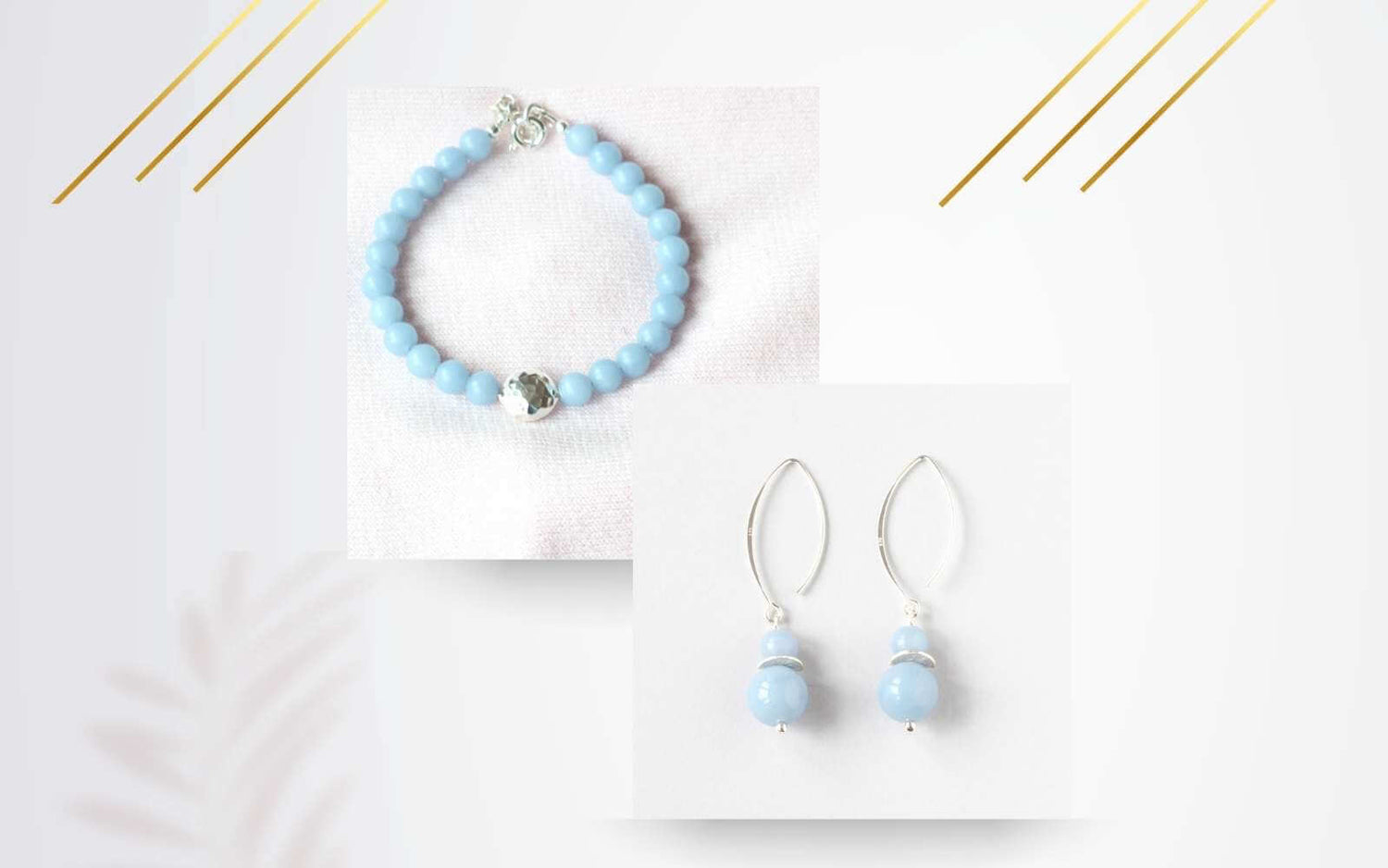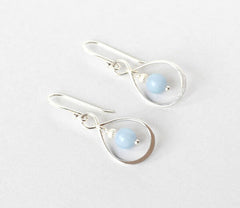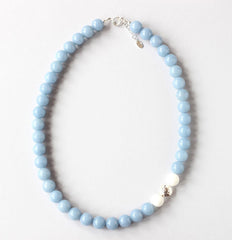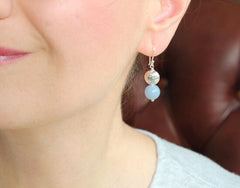
Sterling Silver vs Fine Silver
Sterling Silver vs Fine Silver
Silver, with its timeless allure, has been a favoured choice for jewellery for centuries. When it comes to silver jewellery, two terms often pop up - sterling silver and fine silver. Both hold a distinct shine, but the variations lie in their composition, durability and overall aesthetic. I hope this blog post will help you understand their differences and help you make an informed decision when selecting your next piece of silver jewellery. For our jewellery designs, this precious metal is a constant source of inspiration. Silver enhances the appearance of certain gemstones, and we can never have too much of its brightness!
Understanding Sterling Silver
Composition of Sterling Silver
Sterling silver is an alloy composed of 92.5% pure silver and 7.5% other metals, typically copper. This amalgamation is necessary because pure silver is too soft for practical use in jewellery. The addition of copper provides durability and strength, allowing the silver to withstand the wear and tear of daily use.
Durability and Hardness of Sterling Silver
The inclusion of copper in sterling silver enhances its hardness, making it more resistant to scratches, dents and deformities. This added durability ensures that sterling silver jewellery retains its shape and beauty over time.
Hypoallergenic Properties of Sterling Silver
Sterling silver is known for its entirely natural origin and hypoallergenic properties. This makes sterling silver jewellery a suitable option for individuals with sensitive skin who want to enjoy the elegance of precious metals without the risk of irritation.
Tarnishing and Maintenance of Sterling Silver
Tarnishing is a common characteristic of sterling silver due to its exposure to air and certain environmental elements. However, this does not diminish its value or quality. Sterling silver is very easy to clean to regain its shine. Regular care is very important though. Polishing with a soft cloth or using silver cleaning solutions, can effectively combat tarnish and maintain the brilliance of sterling silver jewellery. Our details guide on how to clean silver at home is super quick, affordable and effective.
Fine Silver Explained
Composition of Fine Silver
Fine silver, in contrast, is composed of 99.9% pure silver. This remarkable purity makes fine silver the closest to elemental silver, unalloyed and untainted by other metals. The absence of alloys contributes to its stunning, bright-white appearance, setting it apart from the slightly warmer tone of sterling silver.
Softness and Purity of Fine Silver
The high purity of fine silver causes it to be soft and malleable. While this characteristic makes fine silver perfect for intricate designs and detailed craftsmanship, it also makes the metal more susceptible to scratches and wear. As a result, fine silver jewellery may require more careful handling to avoid deformation.
Tarnishing and Maintenance of Fine Silver
Fine silver is less prone to tarnishing compared to sterling silver. The lack of alloys that react with environmental elements means that fine silver retains its brilliance for longer periods. However, it is essential to note that tarnishing can still occur over time, particularly in humid or sulphur-rich environments.
Price Point of Fine Silver
The exclusivity of fine silver, with its exceptional purity, contributes to a higher price point compared to sterling silver. While the cost may be steeper, those who appreciate the unparalleled brilliance of pure silver and seek a luxurious touch often find the investment worthwhile.
Choosing Between Sterling Silver and Fine Silver
- Purpose and wearability - if you are looking for everyday jewellery that can withstand the rigours of daily wear sterling silver is a practical choice due to its added durability. Fine silver, with its softness, may be more suitable for special occasion pieces or items that receive gentle, occasional wear.
- Aesthetic preferences - consider the colour tone you prefer. If you enjoy the warmer hue of silver and appreciate budget-friendly options, sterling silver might be your ideal choice. If you desire the brightest, whitest silver possible and are willing to invest in a more exclusive piece, fine silver may be more aligned with your aesthetic preferences.
- Maintenance - sterling silver requires regular care to combat tarnish, while fine silver, though less prone to tarnishing, may still benefit from occasional cleaning.
- Budget considerations - sterling silver offers an excellent balance between affordability and elegance, while fine silver caters to those seeking a more exclusive and luxurious investment.
Conclusion
Sterling silver and fine silver will adorn you with the timeless beauty and sophistication that silver has offered throughout the ages. Sterling silver with its durability and affordability appeals to a broad audience seeking a balance between practicality and beauty. Even though fine silver's exceptional purity makes it special, its softness reduces its extensive use for jewellery. Understanding the distinctions between these types of silver empowers you to make an informed decision when purchasing your next piece of silver jewellery.






